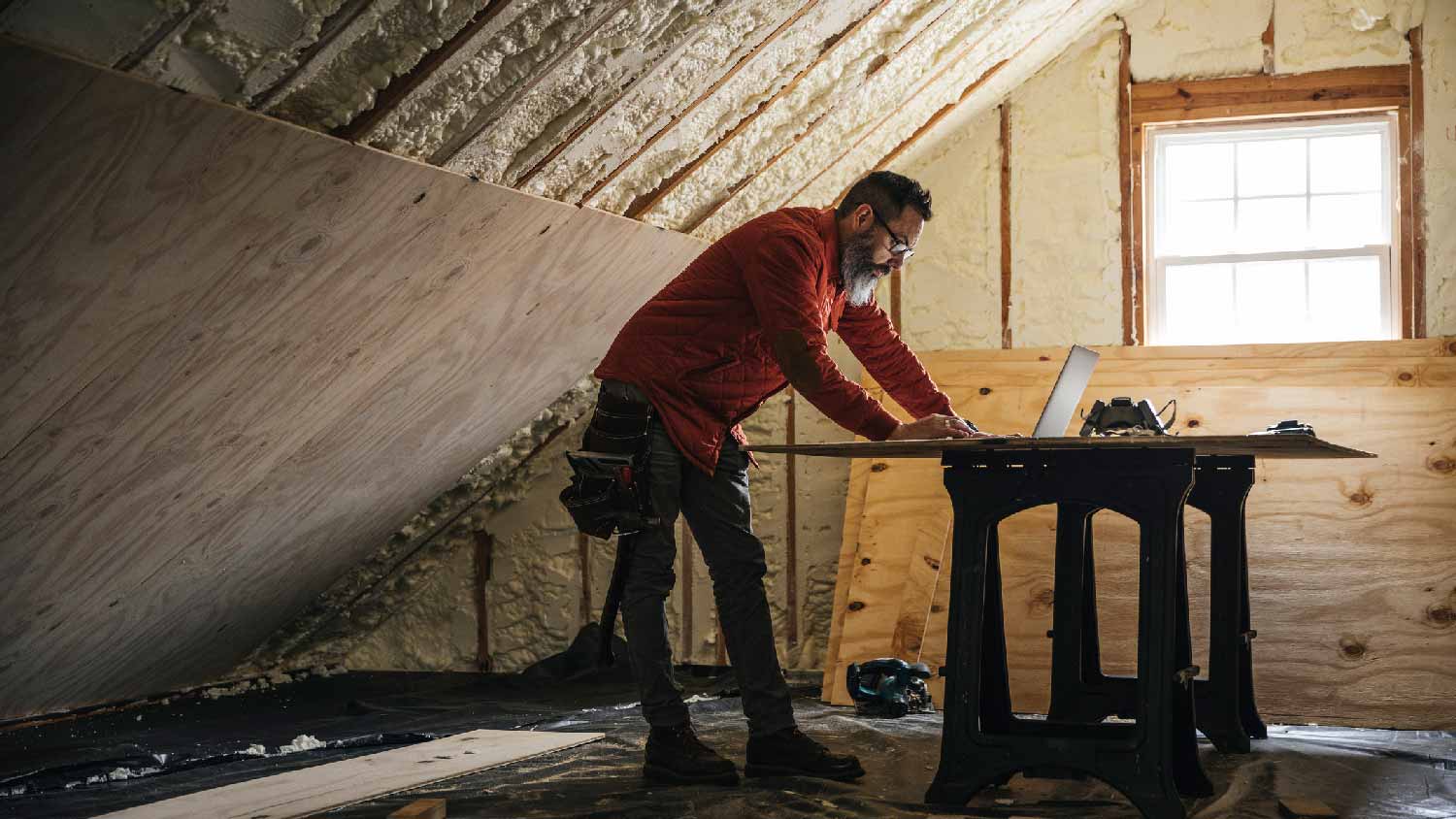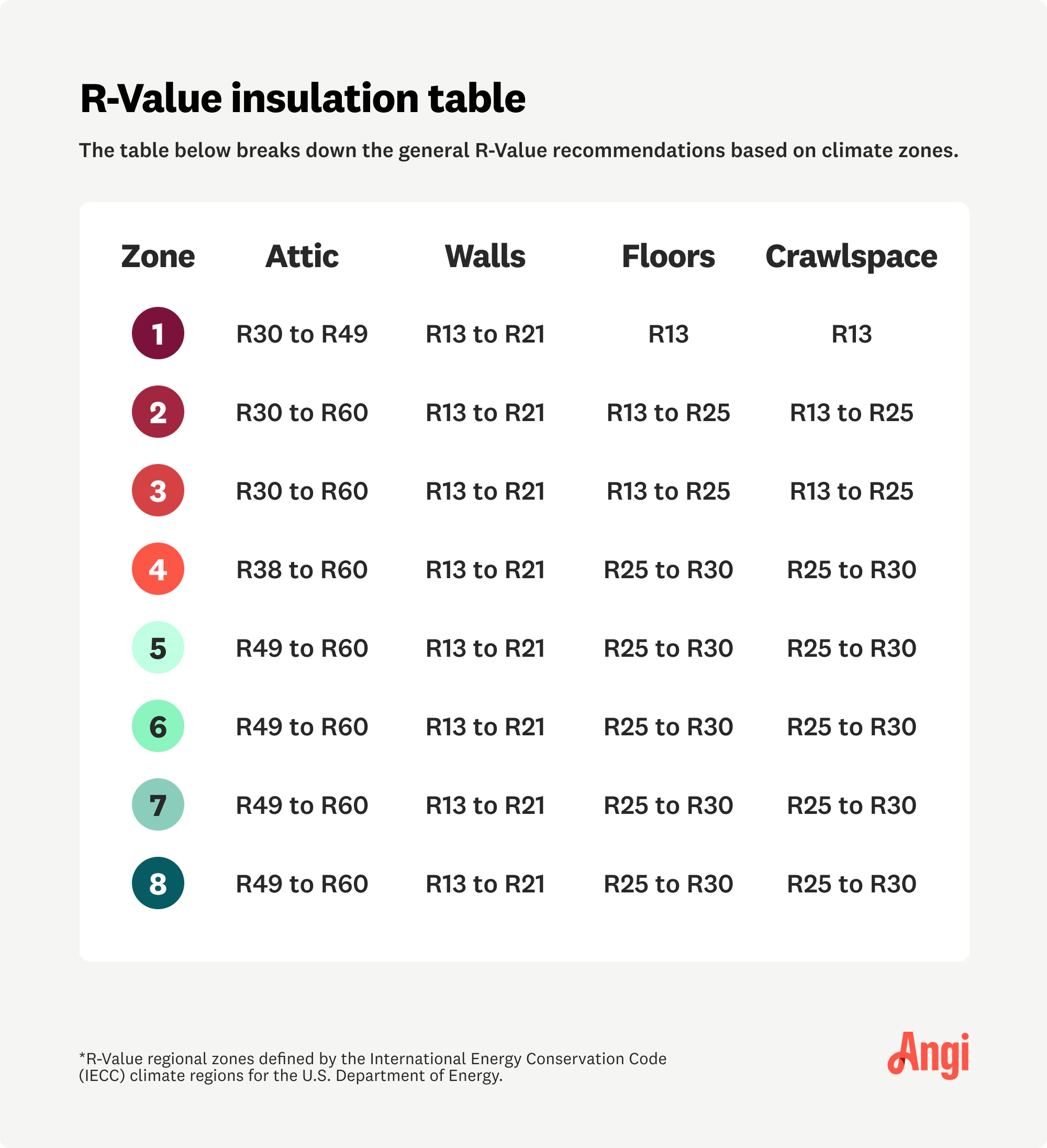What R-Value Do I Need? Here’s How to Choose
You may need to get your calculator out


R-value measures insulation’s resistance to heat flow.
The ideal R-value for your home depends on climate and insulation area.
Attics need higher R-values, while walls and floors vary.
Are you about to kick off an insulation project? If so, you're bound to wonder: what R-value do I need? When it comes to home insulation, R-value, which is short for resistance value, is a critical factor. R-value is a measurement that shows how well an insulation material resists heat flow. Our guide explains how to calculate R-value to choose the best insulation for your home.
What Is R-Value?
As touched on above, R-value indicates an insulation material’s resistance to heat transfer. Poor insulation can cost you big time in terms of energy loss. A proper insulation R-value is crucial for maintaining your home’s temperature and reducing energy costs. Higher R-values offer greater insulation, but more isn’t always better—it's essential to choose an R-value suited to your specific needs and climate.
Selecting the right R-value depends on a range of factors, from your climate to the type of insulation you're considering.
Factors to Consider When Choosing R-Value
Consider these factors to help you determine the correct R-value for your insulation installment.
Climate Zone
In warm areas like Florida and parts of Texas, lower R-values (R-13 to R-21) are often sufficient because the main goal is to reduce cooling costs rather than retain heat.
In colder northern regions, like Minnesota or Maine, higher R-values (R-49 and above for attics) are necessary to retain heat and prevent heat loss through walls, floors, and ceilings.

Area of the Home
Different areas of the house require different levels of insulation. Attics, walls, and floors each have unique R-value needs:
Attics: As much as 30% of a home’s heat loss happens through the roof, so attics need the highest R-value insulation, ranging from R-30 to R-60 depending on the climate zone.
Walls: Wall insulation needs are more moderate, with recommended values between R-13 and R-21.
Floors and basements: Insulating floors over crawl spaces or basements can prevent cold floors and reduce drafts. R-25 to R-30 is often recommended in cooler climates.
Existing Insulation Levels

If your home already has some insulation, you may not need to install high-R-value materials in every area. The goal is to reach the total recommended R-value for each area by adding additional insulation as needed.
While you can use an insulation calculator, you’re better off consulting an insulation company near you to determine whether you should layer new insulation on top of the existing material or replace it altogether for optimal performance.
Type of Insulation
You should choose a type of insulation based on where it will be installed as well as your budget and local climate. For hard-to-reach places or thin walls, high-R-value materials like spray foam can deliver more insulation in less space. To determine the R-value of different insulation materials, it’s essential to know their specific R-value per inch. This number varies by material type, indicating how well each inch of insulation resists heat transfer. Here are some common examples:
Fiberglass Batt Insulation: One of the most common insulation types, fiberglass batts have an R-value of around R-2.9 to R-3.8 per inch. This type works well in wall cavities and attics where space allows for multiple layers.
Spray Foam Insulation: Spray foam comes in two types—open-cell and closed-cell—with different R-values. Closed-cell spray foam provides an R-value of R-6 to R-6.5 per inch, offering high insulation in a compact layer. Open-cell spray foam is less dense with an R-value of about R-3.5 per inch but is great for filling irregular spaces.
Rigid Foam Board: Known for its durability and resistance to moisture, rigid foam board insulation provides an R-value of about R-4 to R-6.5 per inch, making it ideal for basements and exterior walls where high insulation values are needed in limited space.
Cellulose Insulation: Often made from recycled materials, cellulose insulation has an R-value of about R-3.2 to R-3.8 per inch and is effective in wall cavities and attics, though it can settle over time, slightly reducing its R-value.
How to Measure Your Home’s R-Value

To measure your home’s R-value, start by identifying the type and thickness of insulation in key areas like the attic, walls, and basement. Common types include fiberglass batts, spray foam, and cellulose, each with a unique R-value per inch. Measure the thickness of the insulation with a ruler or tape measure, and multiply it by the material’s R-value per inch to get the total R-value for that section.
For areas like walls, you may need to cut a small inspection hole or consult building plans to check insulation depth. An insulation contractor can also help assess hard-to-reach spaces and detect any gaps or settling that could reduce effectiveness. If your current insulation doesn’t meet the recommended R-value for your climate zone, consider adding more layers or upgrading to higher R-value materials for better energy efficiency.
If you need to increase your home’s R-value, you can add layers or replace old insulation. For example, if your attic currently has R-20 insulation but needs R-49, you can layer additional insulation to reach the recommended level. Insulation can degrade over time, especially in areas with moisture exposure. In these cases, removing old insulation and replacing it with new material can boost performance.
Frequently Asked Questions
For 2x4 walls, an R-value of around R-13 to R-15 is ideal. This range provides a good balance of insulation performance and fits well within the limited depth of a 2x4 stud wall. Common insulation options for this thickness include fiberglass batts and spray foam, which deliver adequate insulation for most temperate climates. In colder regions, you might consider adding exterior insulation layers for increased efficiency without needing to alter the wall structure.
The recommended R-value for ceiling insulation depends on your climate zone. Generally, R-values range from R-30 to R-60 for ceilings. Warmer areas can often use R-30 to R-49, while colder climates may need R-49 to R-60 to prevent heat loss. Because heat rises, ceilings lose more heat, so higher R-values are crucial to maximize energy efficiency. Check your specific climate zone recommendations to determine the optimal ceiling R-value for your area.
R-30 insulation is better for higher thermal resistance, but whether it’s "better" depends on the application. R-30 is much thicker and suited for areas like attics or floors in cold climates, where more insulation is required. R-13, on the other hand, is thinner and works well for 2x4 walls or milder climates where less insulation is sufficient. Choosing between R-13 and R-30 depends on the area being insulated and the climate. For example, R-30 provides more insulation but may not fit everywhere in your home.















